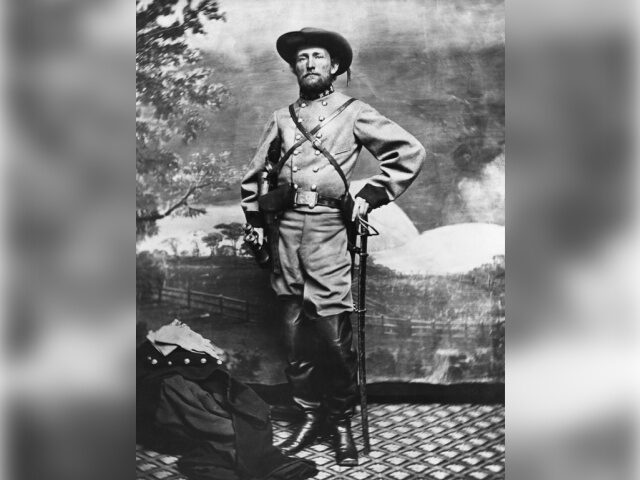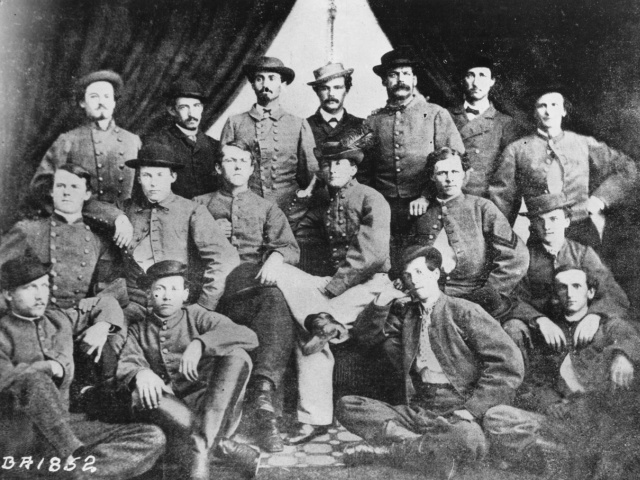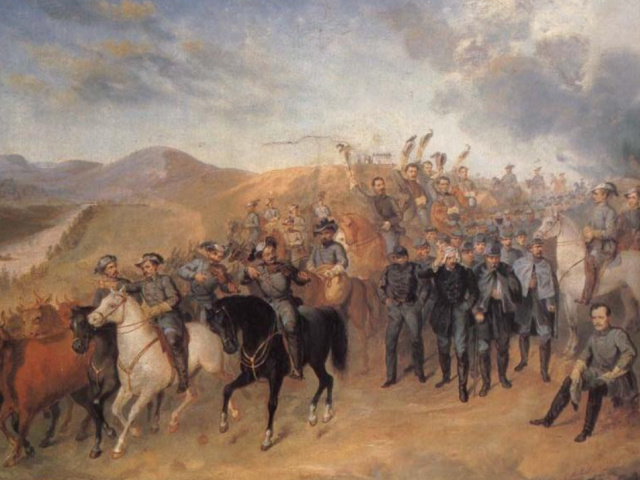Exclusive–O'Donnell: The Devil Takes Care of His Own
 CORBIS/Corbis via Getty Images
CORBIS/Corbis via Getty Images
John Singleton Mosby, also known as the Gray Ghost, was a Confederate partisan leader whose Rangers and their irregular warfare tactics—blowing up bridges, attacking supply lines, and other strategic disruptions—proved such a thorn in the side of Northern forces during the Civil War that an entire special unit was devoted to finding and stopping him.
Mosby himself seemed to have a vampire-like ability to rise from the dead, being severely wounded a handful of times, but always staving off death and capture. One night in December of 1864, the Union army actually had him in their grasp and didn’t even know.
The full details of this remarkable story and unit are found in my new bestselling book, The Unvanquished: The Untold Story of Lincoln’s Special Forces, the Manhunt for Mosby’s Rangers, and the Shadow War That Forged America’s Special Operations. The book reveals the drama of the irregular guerrilla warfare that altered the course of the Civil War including the story of the Union soldiers who donned Confederate gray to hunt Mosby and his Confederate Rangers from 1863 to the war’s end at Appomattox—a previously untold story that inspired the creation of U.S. modern special operations in World War II. The book brings a groundbreaking fresh perspective to the Civil War.

Group portrait of Confederate cavalry Colonel John S Mosby (also known as the 'Gray Ghost', 1833-1916) with soldiers of the 43rd Battalion, Virginia Cavalry (also known as Mosby's Rangers, or Mosby's Raiders), ((top row, from left) Lee Herverson, Ben Palmer, John Puryear, Tom Booker, Norman Randolph, Frank Raham, (second row, from left) Robert Blanks Parrott, John Troop, John W Munson, John S Mosby (with feather), Alphonso M Newell, Neely, Charles H Quarles (third row, from left) Walter Gosden, Harry T Sinnott, Otho L Butler, Isaac A Gentry), in Richmond, Virginia, circa 1864. Formed on 10th June 1863, the 43rd Battalion was disbanded on 21st April 1865. (Photo by Archive Photos/Hulton Archive/Getty Images)
For much of December 1864, Mosby and his Rangers found Loudoun County, Virginia in smoking ruins and subject to General Philip Sheridan’s scorched-earth policy. “I will soon commence on Loudoun County and let them know there is a God in Israel. Mosby has annoyed me considerably, but the people are beginning to see he does not injure me a great deal but causes a loss to them of all they have spent their lives accumulating. . . . But when they have to bear their burden by loss of property and comforts, they will cry for peace,”1 wrote Sheridan on November 26. In what would become known as the Burning Raid, he ordered his cavalry regiments who had battled Mosby for months to burn all mills and barns, destroy all forage and subsistence, and drive off and kill livestock. Homes were to be spared. With the division’s massive numbers, Mosby could only attack rear elements of Sheridan’s army but could not stop the swath of destruction they cut across the county.
Mosby, coming from a wedding near Glen Welby farm on a cold early December night, arrayed in his finest—with heavy black, scarlet-lined cape, ostrich-plumed hat, gold cords, tall boots, and two stars gleaming on his collar indicating his rank—stopped with fellow Ranger Tom Love at a friendly home for a late supper. Believing themselves safe, they left their horses and pistols secured outside. However, amid their dinner, scores of Union troops descended on them and their hosts.
When Union officers entered the dining room of Lakeland (a two-story mansion which still stands today), Mosby quickly covered the stars on his collar with his hands. “I knew that if they discovered my rank, to say nothing of my name, they would guard me more carefully.” As he stood by a Union officer, a stray bullet from outside struck the Confederate guerilla leader in the stomach. He gasped, “I am shot!”2
Chaos ensued. “In the confusion to get out of the way, there was a sort of hurdle race, in which the supper table was knocked over, and the tallow lights put out,” wrote Mosby in his memoir. “In a few seconds, I was left in the room with no one but Love, Lake [their host], and his daughter.” Still bleeding profusely, Mosby walked into the adjoining bedroom and hid his coat with its telltale stars, then he lay on the floor, “determined to play the part of a dying man.” When the Union soldiers returned, they questioned a guest at the dinner who knew Mosby well, and whose brother was in his command, about the fallen man’s identity. Mosby “listened with fear and trembling for her answer” until he heard her declare she had never seen him before. “I am sure that in the eternal records, there is nothing registered against that good woman who denied my name and saved my life.”3
Mosby himself gave the soldiers a false name and false command when they interrogated him and examined his wound. A doctor declared his wound to be mortal, shot through the heart. “He located the heart rather low down, and even in that supreme moment, I felt tempted to laugh at his ignorance of human anatomy. I only gasped a few words and affected to be dying.”4 The soldiers left after stripping him of his fine boots and trousers, thinking a dead man would have no further need of them.
“Although I was a prisoner at the time, I have never complained of [the bullet], for it proved to be a lucky shot for me. It was the means of my escape.” After waiting to be sure his enemies had left, Mosby rose from the pool of blood and walked into the other room, greatly astonishing his hosts “as if I had risen from the tomb.” Even Mosby still thought he might have one foot in the grave: “My own belief was that the wound was mortal; that the bullet was in me.” Wrapped in quilts and placed in the back of an oxcart, Mosby was transported to a safe house in the middle of a fierce storm, where doctors removed the bullet before he was further transported to his father’s house in Lynchburg to convalesce. In the meantime, Northern and Southern press falsely reported his death, but eventually a Northern paper retracted with the commentary that “the devil takes care of his own.”5
OR, Series 1, Vol. XLIII, Pt. II, Chap. LV, 672.
Mosby, Memoirs, 338.
Mosby, 339, 340, 341.
Mosby, 341.
Mosby, 345, 342, 352.
Patrick K. O'Donnell is a bestselling, critically-acclaimed military historian and an expert on elite units. He is the author of thirteen books, including his bestselling book on the Civil War The Unvanquished: The Untold Story of Lincoln’s Special Forces, the Manhunt for Mosby’s Rangers, and the Shadow War That Forged America’s Special Operations, currently in front display of Barnes and Noble Stores nationwide. His other bestsellers include: The Indispensables, The Unknowns, and Washington’s Immortals. O'Donnell served as a combat historian in a Marine rifle platoon during the Battle of Fallujah and often speaks on espionage, special operations, and counterinsurgency. He has provided historical consulting for DreamWorks' award-winning miniseries Band of Brothers and documentaries produced by the BBC, the History Channel, and Discovery. PatrickKODonnell.com @combathistorian
Source link


